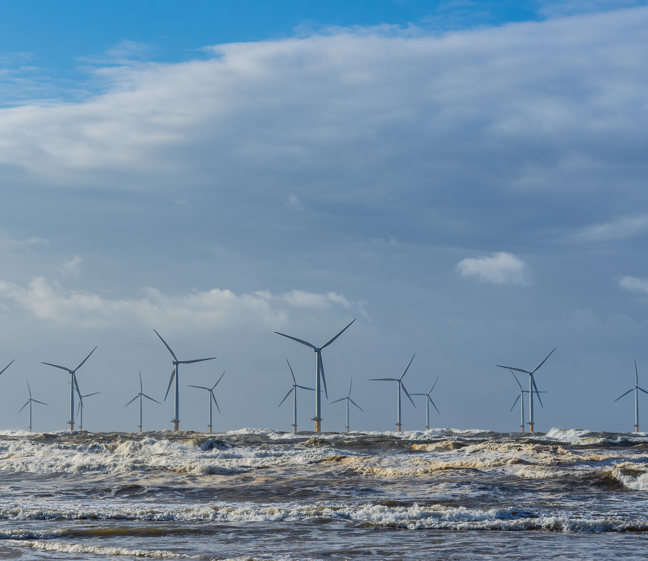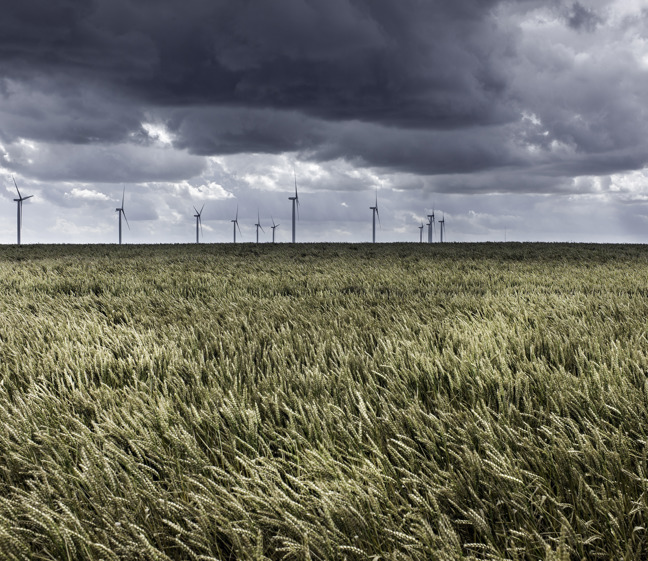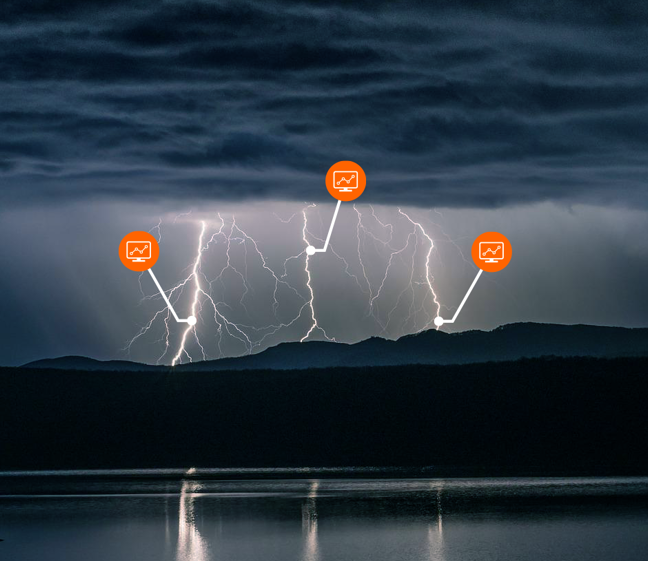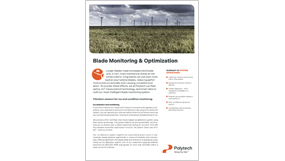Polytech
Our blade monitoring solutions have a proven track record of 70,000+ fiber optic sensors that are actively controlling and monitoring wind turbines worldwide.

Load monitoring
Longer blades mean increased wind loads and, in turn, more mechanical stress on the entire turbine. To counter this, we at Polytech use fiber optics, IIoT measurement technology, and smart data to craft our most intelligent blade monitoring system.
Blade load monitoring to expand the range of possible sites
One way to use our sensor technology is for blade load monitoring, which is a vital part of any individual pitch control system. This allows you to design the mechanical structures more cost-effectively and thus massively reduce the material costs of the entire rotor. It also opens the possibility of using the same turbine type for a wider range of wind conditions as well as optimizing the design for specific locations.
In short, it expands the range of economically viable sites for your turbines and allows for significantly increased energy production through larger rotors in the same wind class. All of which helps make your turbines more competitive in the international arena.
Our blade load monitoring system is:
- lightning resistant
- maintenance free
- available with remote, autonomous system calibration
- designed to last the turbine’s lifetime
Ice detection and monitoring
If your wind turbines lie in areas with frequent ice events and regulatory obligations, your operations need a bit more attention. With an ice detection system, you can operate your turbines safely (minimize ice throw), maximize your annual energy production, and avoid unnecessary shutdowns due to ice.
We provide a DNV-certified, rotor blade-based ice detection system using fiber optics technology. The system accurately measures the amount of ice directly on each blade - even during standstill. The moment your blades are ice free, the turbine restarts, and you’re back in business. No need to wait for visual inspection causing unnecessary downtime.
Our rotor-based ice monitoring system is:
- maintenance-free
- lightning resistant
- available with automatic start/stop function
- designed to last the lifetime of your blades.
Our ice detection system outperforms conventional power curve or anemometer-based systems significantly in terms of reliability and functionality. Using our system, one of our customers reduced their turbines’ downtime by 884,000 MWh and gained of more than €70,000 within a week across 26 turbines.


Condition monitoring
We developed our blade condition monitoring system to detect and monitor structural damages to rotor blades and to optimize maintenance and repair planning.
We use the same, DNV-certified hardware configuration as in our ice detection system.
Lightning monitoring - LKDS®
Reliable lightning strike monitoring can optimize the maintenance of your wind turbine, reduce operating costs, and increase annual energy yield.
Our Lightning Key Data System (or LKDS®) provides a robust solution that detects lightning event per blade.
Read more about the solution here.

Contact us
Get in touch with our Sales team directly or contact our Business Development Director Kristian Kjærholm (for OEM customers) or Head of Aftermarket Marc Foldager (for aftermarket customers) to learn more about how our solutions can optimize your operations.


